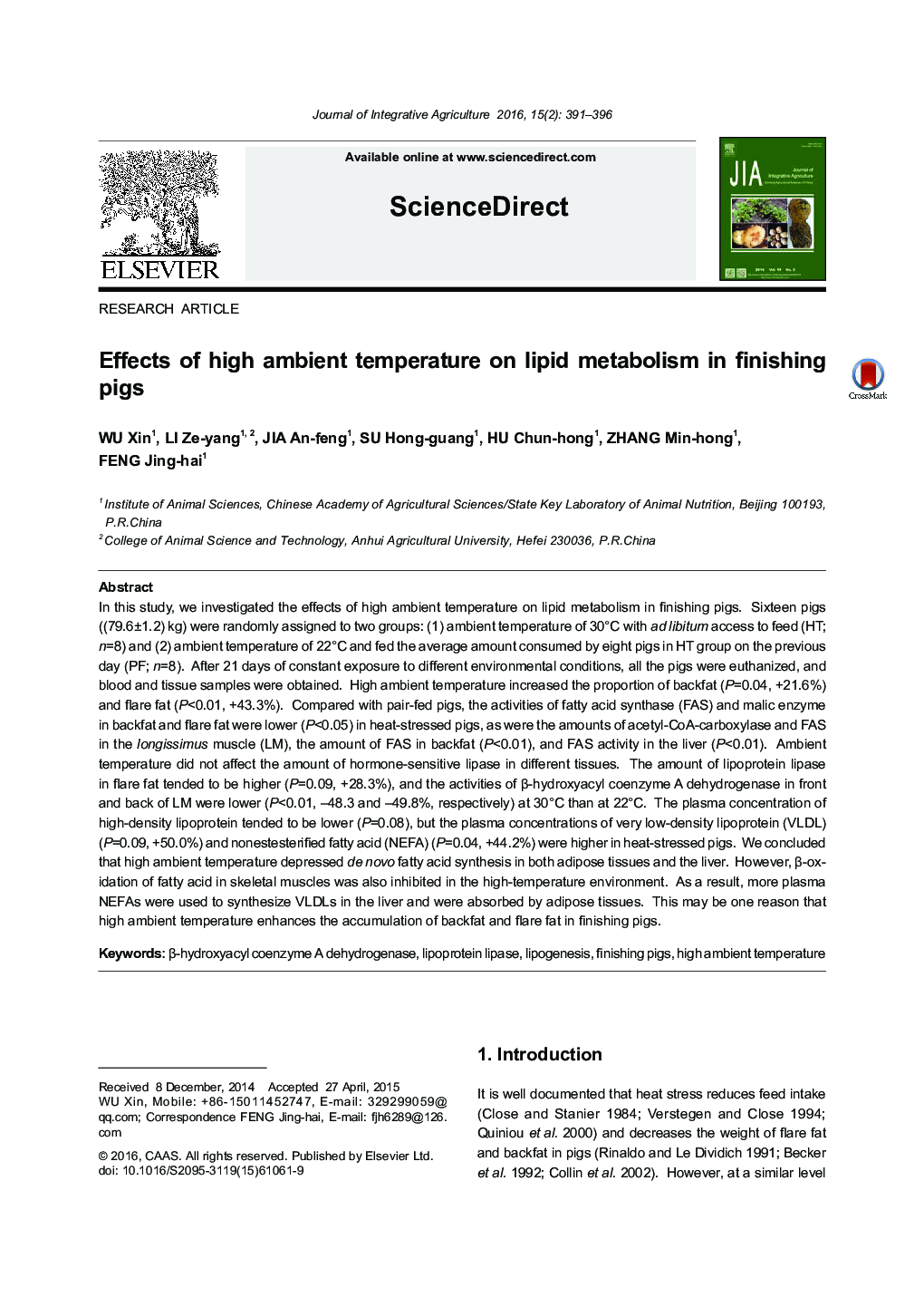| Article ID | Journal | Published Year | Pages | File Type |
|---|---|---|---|---|
| 10180054 | Journal of Integrative Agriculture | 2016 | 6 Pages |
Abstract
In this study, we investigated the effects of high ambient temperature on lipid metabolism in finishing pigs. Sixteen pigs ((79.6±1.2) kg) were randomly assigned to two groups: (1) ambient temperature of 30°C with ad libitum access to feed (HT; n=8) and (2) ambient temperature of 22°C and fed the average amount consumed by eight pigs in HT group on the previous day (PF; n=8). After 21 days of constant exposure to different environmental conditions, all the pigs were euthanized, and blood and tissue samples were obtained. High ambient temperature increased the proportion of backfat (P=0.04, +21.6%) and flare fat (P<0.01, +43.3%). Compared with pair-fed pigs, the activities of fatty acid synthase (FAS) and malic enzyme in backfat and flare fat were lower (P<0.05) in heat-stressed pigs, as were the amounts of acetyl-CoA-carboxylase and FAS in the longissimus muscle (LM), the amount of FAS in backfat (P<0.01), and FAS activity in the liver (P<0.01). Ambient temperature did not affect the amount of hormone-sensitive lipase in different tissues. The amount of lipoprotein lipase in flare fat tended to be higher (P=0.09, +28.3%), and the activities of β-hydroxyacyl coenzyme A dehydrogenase in front and back of LM were lower (P<0.01, â48.3 and â49.8%, respectively) at 30°C than at 22°C. The plasma concentration of high-density lipoprotein tended to be lower (P=0.08), but the plasma concentrations of very low-density lipoprotein (VLDL) (P=0.09, +50.0%) and nonestesterified fatty acid (NEFA) (P=0.04, +44.2%) were higher in heat-stressed pigs. We concluded that high ambient temperature depressed de novo fatty acid synthesis in both adipose tissues and the liver. However, β-oxidation of fatty acid in skeletal muscles was also inhibited in the high-temperature environment. As a result, more plasma NEFAs were used to synthesize VLDLs in the liver and were absorbed by adipose tissues. This may be one reason that high ambient temperature enhances the accumulation of backfat and flare fat in finishing pigs.
Related Topics
Life Sciences
Agricultural and Biological Sciences
Agricultural and Biological Sciences (General)
Authors
Xin WU, Ze-yang LI, An-feng JIA, Hong-guang SU, Chun-hong HU, Min-hong ZHANG, Jing-hai FENG,
